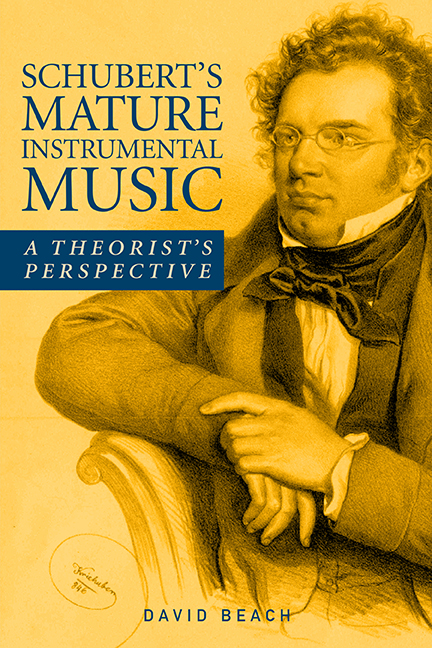Summary
A logical starting point for our investigation into Schubert's late instrumental music is his use of harmony. Fundamentally, Schubert's harmonic language is that of his contemporaries and immediate predecessors, but there are aspects of that common language—particular emphases—that we can identify as hallmarks of his harmonic practice or style. Just what are these hallmarks? It may seem surprising to some that I will begin my presentation with the common diatonic progression I–vi–IV (or i–VI–iv in the minor mode). I have done so because Schubert employs this progression in such a wide variety of contexts, including large-scale harmonic motion across formal boundaries. We then turn our attention to his use of chromaticism, beginning with modal mixture, often cited as a characteristic of Schubert's harmonic practice. This is followed by sections detailing his employment of III♯ in various contexts, the progression ♭VII–V, and chains of descending major thirds. The next section presents examples of chromatic modulation, emphasizing those involving the interchange of the German augmented sixth chord and V7, and the chapter ends with what I have labeled “truncated progressions.”
I will begin with an introductory example: the first fifty measures from the first movement of the Piano Trio in E-flat Major (D. 929)—the first theme and the transition to the second subject and key, which is reproduced with analytical additions as example 1.1. This complex passage illustrates many of the topics to be discussed later in this and in subsequent chapters, and at the same time, it provides an opportunity to indicate my approach to the music, including my system of labeling harmonies. On the score I have marked the major formal divisions of this passage: theme 1 (mm. 1–35), the transition (mm. 36–48), and the initial measure of theme 2. In addition, I have indicated two separate components of theme 1: 1a, the opening four-measure idea, an elaboration of the descending arpeggiation of the tonic triad; and 1b, the motive introduced by the cello in measures 16–18. This and subsequent statements of this idea are highlighted by brackets.
- Type
- Chapter
- Information
- Schubert's Mature Instrumental MusicA Theorist's Perspective, pp. 3 - 37Publisher: Boydell & BrewerPrint publication year: 2017

